LYNDA COLE: recent places and themes
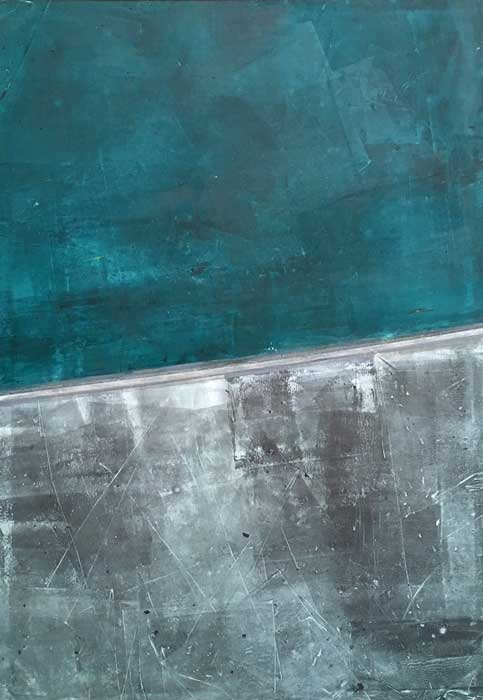
Two No.12 :
oil, cold wax on terraskin :
29″ x 20″ :
by Lynda Cole
Winter 2017/18 has been a long one so far here in Michigan. We expect this kind of thing. We are, after all, Michiganders. When there’s snow, you can convince yourself that you are living in a black and white photograph, which has its own sense of calm and beauty. The thing that turns lifelong Michiganders into Snowbirds isn’t so much the snow and winter weather as the lack of sunlight.
Lynda Cole’s newest show at WSG harnesses all of the sunlight into a gridded wall of paintings and a single painting with a grid structure. Meanwhile, her more monochromatic paintings and her suspended sculpture, ‘Future Polar Memories’ seem to capture the quiet beauty of all things winter.
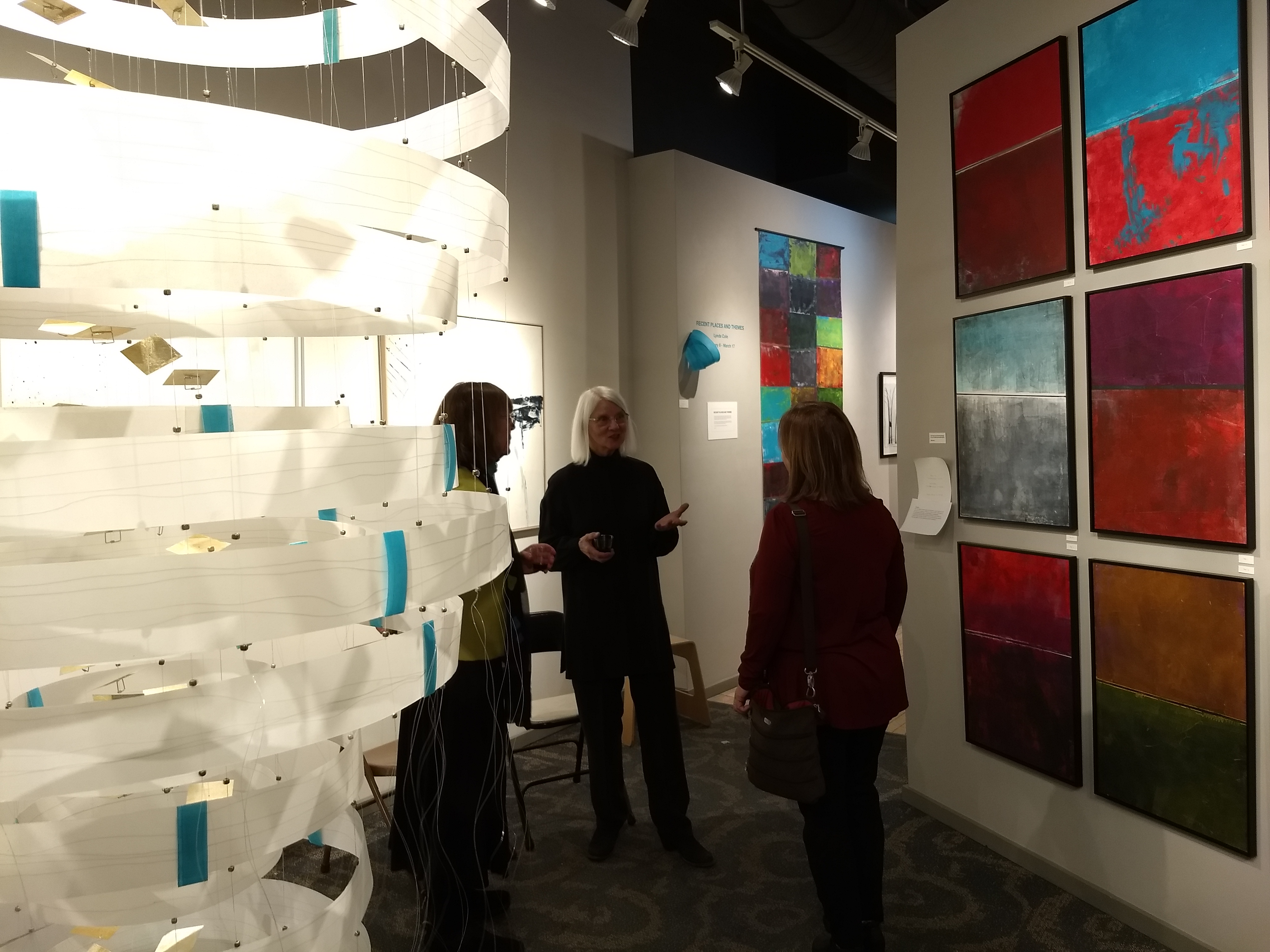
I recently had the chance to ask Lynda Cole a few questions about her newest show at WSG.
Q: You’ve been traveling to some pretty interesting places the past few years. The themes to your travel have been COLD places and environmentally sensitive locations. How do you think your travel has affected your art-making?
LC: I know the colors from the polar regions have stayed in my head. These are black (water and exposed land), white (snow and ice) and the beautiful turquoise of old ice in glaciers. Then there is the stillness. Once one is past the Drake Passage in the south the water is frequently quite calm. Calm seas, quiet landscapes, black, white and blue in the eyes. This isn’t showing up in my artwork too much as yet but I feel it there, percolating.
There is also the concern for the vanishing ice. I didn’t feel this very much in the Antarctic or the Arctic because there is ice, snow and water wherever you look but the thoughts about the melting ice are there. You don’t have to be in a polar region to be concerned about what is happening. I do feel very privileged to have visited some of the iced parts of the Earth.
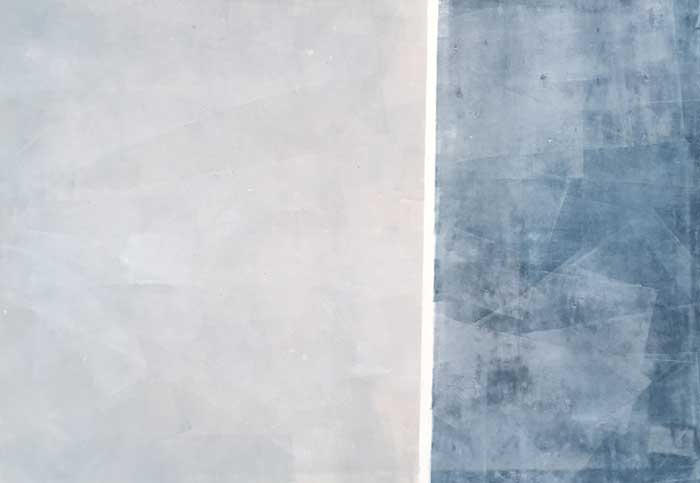
Two No.2 :
oil, cold wax on terraskin :
20″ x 29″ :
by Lynda Cole
Q. In this exhibit you’ve added a medium to your repertoire – cold wax. What prompted your interest in adding this medium?
LC: I had been going to an annual Encaustic Conference where people were experimenting with this “new” medium. I resisted for a few years but took the plunge when, in mid 2017, Rebecca Crowell and Jerry McLaughlin came out with a book titled, Cold Wax Medium: Techniques, Concepts and Conversations. I bought the book then bought some cold wax and have been using it ever since. It isn’t a new medium. Oil painters have been using it for years to extend oil paints. I use oil pigment sticks (mostly from R&F Paints) with the cold wax. If you slice off a piece of oil pigment stick and mix it with some cold wax (which has the consistency of a paste wax) you will end up with paint that has the consistency of a thick lipstick – rather luscious.
The other new media for me in this show is the substrate, Terraskin. I came to that through artists’ use of it in the Cold Wax Medium book. Terraskin is made from calcium carbonate, uses no water or trees or bleaches in the production and makes a surface good for water media, oils, encaustic, pencil, pens. It interests me as an environmentally friendly product and because of the feel of it. It claims to be archival.
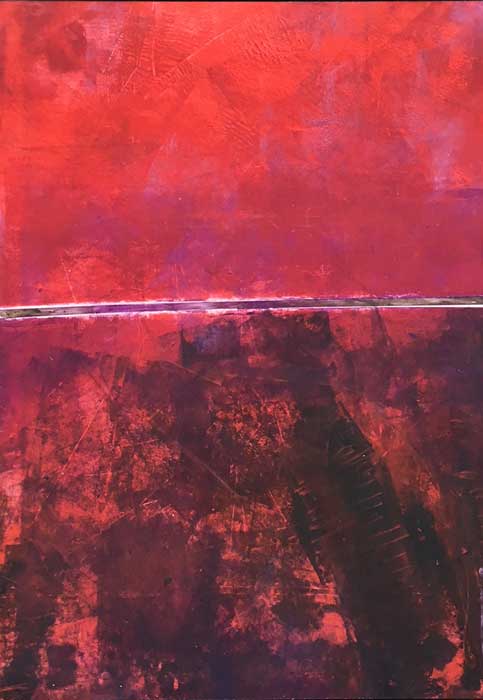
Two No.11 :
oil, cold wax on terraskin :
29″ x 20″ :
by Lynda Cole
Q. The colors in your new paintings seem to have an essential quality – a quality that makes the viewer feel the color in her/his core, as much as see it. We understand color in our brains is one of the oldest, evolution-wise, areas of our brains. Could you speak a bit about your color choices for this show?
LC: The paintings in this color series have no subject matter that is apparent. There is subject matter but it is in the mark making and how the colors influence each other. These things create a mood. Nothing much to think about. Look at them and see how they make you feel. That is my intention for the viewer .
My color choices began with colors that were close to each other – like Indigo and Blue Ochre. I wanted to see how they would look to the eyes when the eyes were made to go back and forth between the two colors and how different when the colors were mixed. I was also playing with warm and cool colors. A color looks quite different depending on what color it is placed next to. These were some ways of investigating color. I enjoyed it so I kept on. Throughout my day I would come across color combinations to investigate and either take a photo to remind myself or make a note.
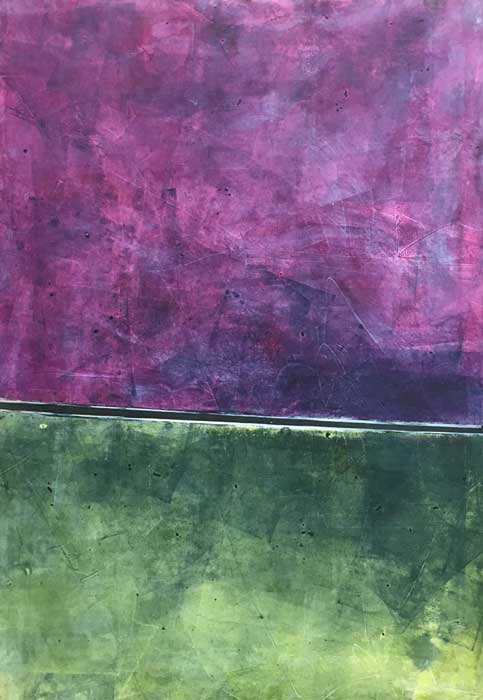
Two No.16:
oil, cold wax on terraskin :
29″ x 20″ :
by Lynda Cole
Q: The surfaces in your cold wax pieces are quite different from the surfaces in your encaustic pieces. Could you address that a bit?
LC: There is a major difference between cold wax/oil pigment stick and encaustic. Although both use wax, in the cold wax process no heat is used. Encaustic means ‘burning in’ and uses heat. The encaustic surface is frequently quite luminous while the cold wax/oil pigment stick surface (the way I mix them) is very matte. Each type of surface tells a different story. I love them both.
Another difference in them is timing. In an encaustic studio it takes a bit of time to get the wax melting so it can be used to paint. I can start right in with a cold wax painting. On the other hand, encaustic dries very quickly. Oil paint pigment sticks/cold wax sometimes take days or weeks to dry. I’m learning about that.
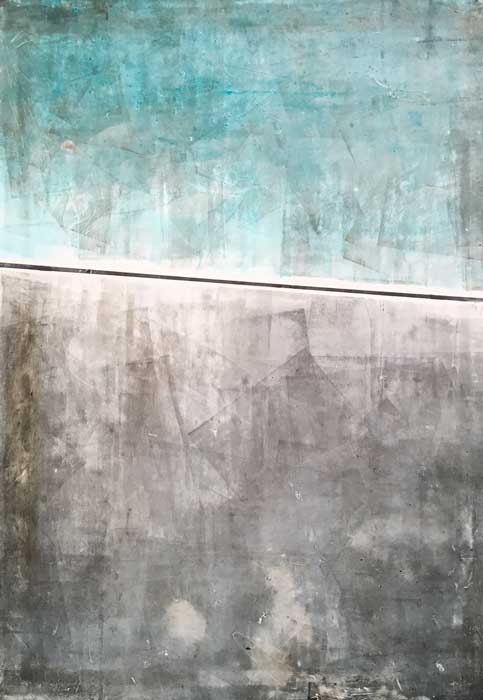
Two No.18 :
oil, cold wax on terraskin :
29″ x 20″ :
by Lynda Cole
Q: Could you talk a little about the grid arrangements in your pieces?
LC: I’ve always loved grids. I think it’s in my genes. Chaos is interesting too but is not usually my ‘go to’ type of organization. Repeats are very satisfying also.